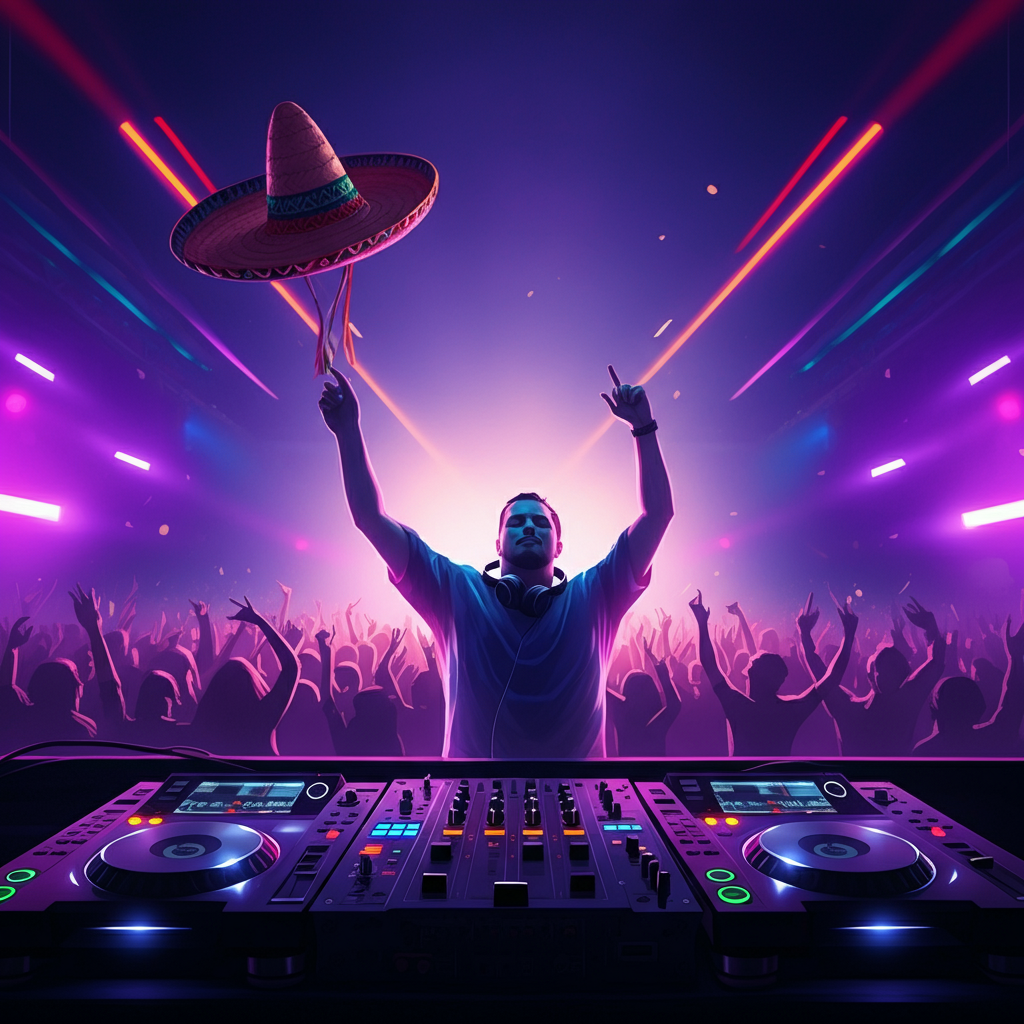
Introduction
Music is a reflection of culture, community, and progress and is much more than just sound. The rhythm of the Mexican DJ has become a new and popular beat in the world of electronic dance music (EDM). This up-and-coming artist combines contemporary electronic beats with distinctive cultural elements to produce a sound that enthralls listeners everywhere. This blog explores the rise of Mexican DJs and their involvement in EDM, from internationally renowned musicians to the development of genres produced within Mexico’s boundaries.
Beginning with an examination of well-known Mexican DJs, this post takes you on a colorful journey through the world of Mexican EDM, tracing the genre’s development, highlighting its cultural inspirations, and ultimately comprehending its expanding influence on a global scale.
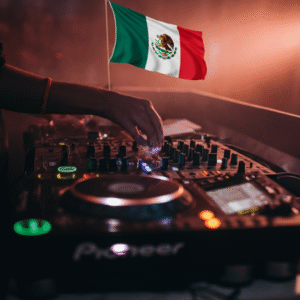
Who Is the Famous Mexican DJ in EDM?
Notable Figures Leading the Scene
Pioneering musicians who establish trends and reshape expectations are frequently honored in the electronic music industry. Among Mexican DJs, a few notable figures keep enhancing Mexico’s influence on the international EDM industry.
Deorro (Erick Orrosquieta): Deorro is arguably the most well-known Mexican DJ abroad. With a huge career that includes singles like “Five Hours” and collaborations with well-known artists like Chris Brown, Deorro is well-known for his progressive house and high-energy drops. His music is unique because, despite his widespread popularity, it frequently still has a faint Latin touch.
Boombox Cartel (Americo & Jorge Medina): Boombox Cartel is a well-known pair in the bass and trap subgenres who have won praise for their creative sound design. They create a connection between electronic music’s legacy and futurity by fusing traditional Mexican instrumentation with strong, forward-thinking beats.
Mariana Bo: Mariana Bo is the queen of the intersection of classical and techno instruments. She is well-known for fusing live violin performances into her presentations, which has made her a singular and memorable performer. She showcases the diversity of Mexican talent by performing at events such as Tomorrowland.
Jessica Audiffred: As Mexico’s bass queen, Jessica Audiffred is known for her audacious and unrepentant music. She represents Mexico at worldwide bass and dubstep shows, and her presence in a scene that is dominated by men is both thrilling and inspirational.
Upcoming Artists to Watch
Rising artists like Macross 82-99, Sotelúm, and Toy Selectah are changing the Mexican EDM scene alongside the more well-known names. These musicians create something completely original by fusing innovative production with regional influences.
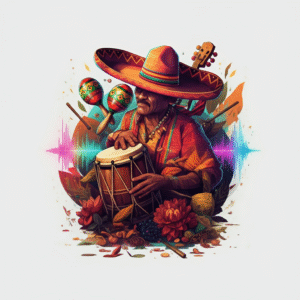
The Evolution of Mexican EDM
Early Beginnings
Mexico has a thriving electronic music industry that began in the late 1980s, long before EDM as we know it now became popular. The early electronic trend was fostered by the underground rave scene in cities like Mexico City and Monterrey. During this period, DJs were influenced by early trance and European techno, which they later modified to suit regional preferences.
Popularization in the 2000s
A major turning point was reached in the 2000s when international festivals like EDC and Ultra Music Festival started to visit Mexico. Rising stars were able to enter the mainstream thanks to these events, which gave local talent a stage on which to shine.
At the same time, the internet made production skills more accessible, allowing young Mexican producers to explore and release music all over the world with little financial outlay. More structured growth occurred in this decade, with big room and electro house sounds particularly gaining popularity.
The Birth of Latin EDM
Over the past ten years, Latin EDM—an upbeat crossover that combines electronic elements with traditional Latin beats—has really started to take shape. Artists like 3BallMTY, who skillfully incorporated pre-Hispanic sounds into dancefloor-ready anthems, popularized genres like tribalero (or tribal guarachero), which became an expression of this fusion.
Techno, trap, future bass, and other subgenres with a stronger cultural influence are all part of the increasingly diverse Mexican EDM scene today.
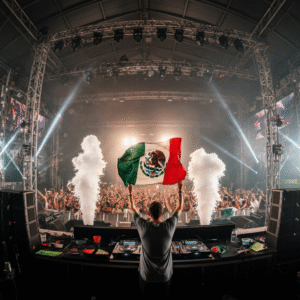
What Makes Mexican EDM Unique?
Cultural Influences Shaping the Sound
The distinctive characteristic of Mexican DJs is the extent to which they incorporate their cultural heritage into their work. Mexican EDM finds strength in its capacity to blend heritage with trendsetting, in contrast to other electronic music regions that rely largely on future themes.
1. Regional Rhythms and Instruments
Mexican DJs frequently mix traditional beats like Banda, huapango, and cumbia over intricate electronic backbones. Additionally, to give texture rooted in Mexican tradition, instruments like the Mexican harp and vihuela are occasionally sampled into compositions.
2. Narratives Through Sound Design
At its foundation, Latin music is narrative, and Mexican producers continue this legacy by creating aural journeys in their compositions. Themes of ritual, liberation, or joy are frequently reflected in tracks.
3. Festivities and Festivals
One of Latin America’s liveliest music festival circuits is found in Mexico. In addition to including worldwide headliners, festivals like Corona Capital and EDC Mexico also showcase local talent.

Is EDM Popular in Mexico?
One may question whether the success of Mexico’s EDM industry is due to the rise of local talent or whether the country’s population has a greater interest in the genre. The latter is clearly the more likely option.
Due in large part to its vibrant festival culture and its incredibly diverse population, Mexico has grown to become one of the world’s biggest marketplaces for EDM. The welcoming ambience of dance music appeals to people from all walks of life.
Tribalero Phenomenon
Tribero, a subgenre that became well-known worldwide in the 2010s, is especially associated with Mexico. Using pre-Columbian recordings, a fast pace, and an emphasis on repeated beats, tribalero represented a uniquely Mexican electronic sound that local communities could claim as their own.
The Global Impact of Mexican DJs
Collaborations With International Artists
Mexican DJs have expanded their influence by collaborating with well-known bands from around the world. Deorro’s collaborations with Pitbull and Elvis Crespo demonstrate how popular songs can be influenced by Mexican music.
Representing Mexico Internationally
In recent years, Mexican DJs have been featured more and more on platforms like Coachella and Tomorrowland, giving them the opportunity to represent their country on a genuinely international scale. Mariana Bo’s violin-heavy performance at Tomorrowland is still regarded as an unforgettable moment.
Social Media Power
YouTube and TikTok are also responsible for a large portion of Mexican EDM’s global success. Viral songs with distinctive mixes that incorporate traditional components have brought musicians to a wider audience than ever before.
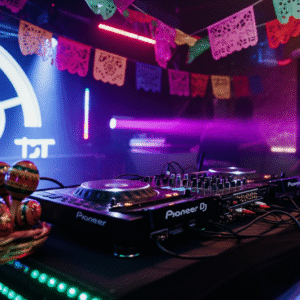
Famous Questions About Mexican DJs
Curiosity always circles unknowns, and there are a few key questions that intrigue dance music fans regarding Mexican DJs:
1. Who Was the First Latino EDM DJ?
Given the multifaceted history of EDM’s expansion throughout Latin America, it is difficult to provide a comprehensive response to this topic. But in the 1980s, trailblazers like DJ Polemarch’s brought electronic music to Mexico, setting the stage for what we witness today.
2. What Sets Them Apart?
Top-tier Mexican DJs always distinguish themselves from their international counterparts by combining cultural authenticity with top-notch production quality.
Actionable Takeaways for EDM Enthusiasts
- Experience Mexican EDM First-Hand – Attend festivals such as EDC Mexico or explore playlists featuring these artists.
- Support Local Talent – Buy tickets to shows hosted by up-and-coming Mexican performers and stream their music regularly.
- Dive Deep – Investigate the roots of tribalero or explore artists like Jessica Audiffred to go beyond the surface layer.
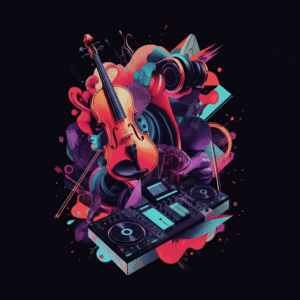
Conclusion
Not only is the emergence of Mexican DJs in EDM a thrilling development for EDM enthusiasts, but it also reflects the creative ways in which music can bridge the past, present, and future. In addition to enjoying great music, you will also develop a greater understanding of the rich culture that influences its production by listening to the beats selected by these gifted musicians.
There is no doubt that Mexican DJs are here to stay and will continue to push the boundaries of music, whether you’re listening to an old Deorro song, being enthralled by Mariana Bo’s violins, or discovering underground tribalero beats.





Leave a Reply